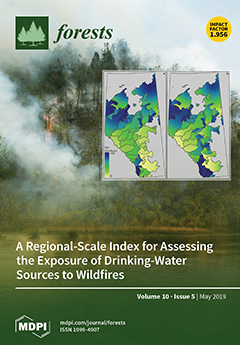Recent advances in laser spectroscopy have allowed for real-time measurements of the
13C/
12C isotopic ratio in CO
2, thereby providing new ways to investigate carbon cycling in natural ecosystems. In this study, we combined an Aerodyne quantum cascade laser spectrometer for CO
2 isotopes with a LI-COR LI-8100A/8150 automated chamber system to measure the δ
13C of CO
2 during automated closed-chamber measurements. The isotopic composition of the CO
2 flux was determined for each chamber measurement by applying the Keeling plot method. We found that the δ
13C measured by the laser spectrometer was influenced by water vapour and CO
2 concentration of the sample air and we developed a method to correct for these effects to yield accurate measurements of δ
13C. Overall, correcting for the CO
2 concentration increased the δ
13C determined from the Keeling plots by 3.4‰ compared to 2.1‰ for the water vapour correction. We used the combined system to measure δ
13C of the CO
2 fluxes automatically every two hours from intact soil, trenched soil, tree stems and coarse roots during a two-month campaign in a Danish beech forest. The mean δ
13C was −29.8 ± 0.32‰ for the intact soil plots, which was similar to the mean δ
13C of −29.8 ± 1.2‰ for the trenched soil plots. The lowest δ
13C was found for the root plots with a mean of −32.6 ± 0.78‰. The mean δ
13C of the stems was −30.2 ± 0.74‰, similar to the mean δ
13C of the soil plots. In conclusion, the study showed the potential of using a quantum cascade laser spectrometer to measure δ
13C of CO
2 during automated closed-chamber measurements, thereby allowing for measurements of isotopic ecosystem CO
2 fluxes at a high temporal resolution. It also highlighted the importance of proper correction for cross-sensitivity with water vapour and CO
2 concentration of the sample air to get accurate measurements of δ
13C.
Full article





